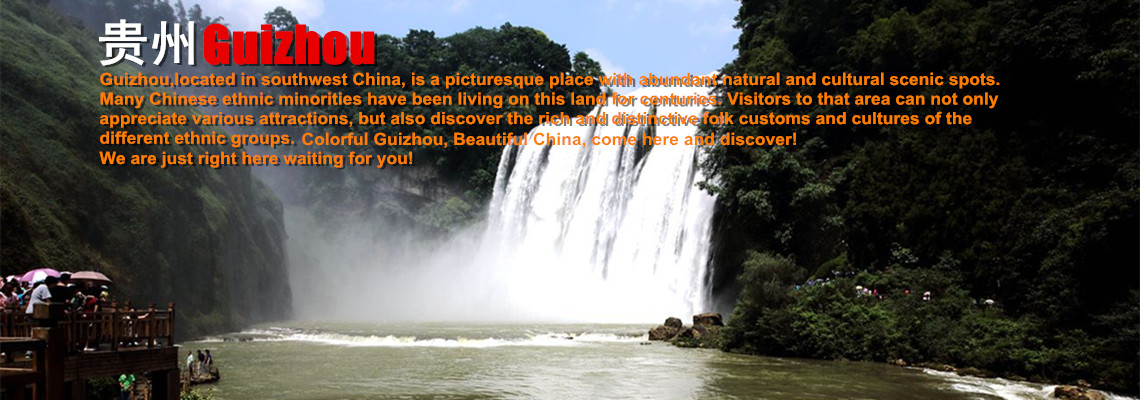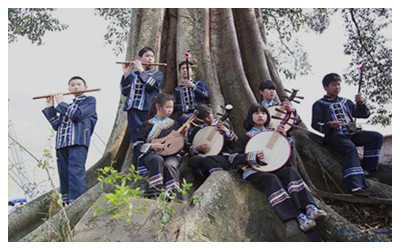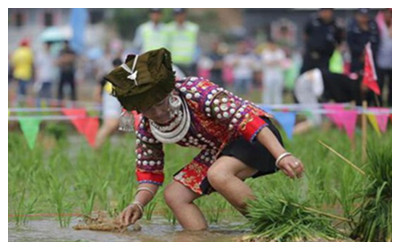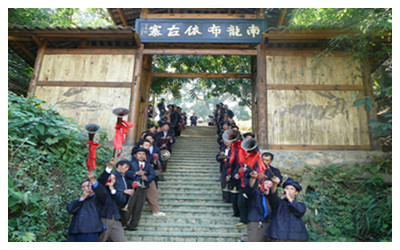Skype: neodalle-travel
Tel: +86 135 7447 2266
E-mail: sales@zhangjiajieholiday.com

 |
 |
 |
| Louna Bouyei Village | Nahui Bouyei Village | Nanlong Bouyei Village |
Lifstyle of Bouyei Ethnic Group
The Buyi people are very frank and friendly. They hold the elderly in very high respect. Buyi villages are always located near rivers and the villages are fairly small. Normally a village will only house a couple dozen families, but some villages have been known to hold several hundred households. Their houses are made of stone. The Buyi people are primarily farmers and are proficient at growing foods as well as animal husbandry.
The clothing of the Buyi minority group is unique. Men traditionally a long sleeved short shirt with long pants. Young men like to wear a headdress of which consists of scarves of black or lattice cloth. In Guizhou along, women's clothing comes in four different styles: northwest, southwest, central, and eastern style. In the northwest of Guizhou women wear a short black jacket. The jacket is tied with a band of cloth. The cuffs and front have batik on them. The jacket is worn with a pleated skirt, an apron, and a turban. They also wear silver accessories. The central style of clothing consists of long green pants, silver ornaments, and an apron. In the southwest, the women wear long pants with a long sleeved blue jacket, or an embroidered coat, and a long pleated skirt. The sleeves and shoulders of the coat are normally decorated with batik or embroidery. The eastern style includes a dress and pants trimmed in lace and a turban. No matter which style of clothing is worn, each is handmade with care by the girl who wears it. Girls are taught at a young age to do embroidery and to make the Buyi minority batik.
The Buyi batik has been famous for thousands of years and the Buyi people are taught to create it at a young age. Batik is created by painting patterns on white cloth with wax. The cloth is then dipped into a bath of indigo dye. When the cloth has dried, the wax is scraped off and then the cloth is boiled to remove all of the wax left in the cloth. The areas where the wax was are white, while the surrounding areas are indigo. Common designs used in batik production are flowers, waves, and chains. In recent years, more modern designs have been created. Buyi people are also known for their embroidery. Originally used only for their own clothing, in recent years, the Buyi people have started selling their embroidered cloth to the public.
The Buyi ethnic minority group like all of the minority groups in Guizhou is very unique. Its ancient customs and traditions have been kept alive and even in today's modern age, the Buyi people still continue to wear their traditional clothing. Their colorful customs have intrigued visitors very many years, and Guizhou's minority groups are starting to draw more visitors each year.
The Bouyei people take rice, corn, wheat and buckwheat as their staple foods. They especially like glutinous rice food, such as glutinous rice cake and Zongzi, a traditional Chinese rice-pudding. The Bouyei people eat glutinous rice at every festival. Their non-staple foods include vegetables, beans and meat.
Sour pepper and tofu are some of their most famous dishes. Every Bouyei household brews glutinous rice wine, regular rice wine and corn wine. Some rice wines, which are used to entertain guests, are brewed with wild resveratrol fruit and are rich in nutrients. The brewing technique of wild resveratrol fruit wine has a history dating back hundreds of years. It has evolved into a bulk commodity and sells well throughout the country.
The Bouyei are also gifted singers and dancers. They sing celebratory songs, build houses, welcome guests and remember sad occasions.
The Bouyei drama and lantern plays are their most unique dramas. Bouyei drama is famous in Guiyang, Changshun and southwestern Guizhou province. It is usually staged during the Spring Festival. Lantern plays are renowned in Dushan, Pingtang and Sandu counties and evolved from lantern singing and dancing and Guangxi's local opera.
Festivals of Bouyei Ethnic Group
The Bouyei have many traditional festivals. Besides the traditional New Year Festival, the Dragon Boat Festival and Mid-Autumn Festival, the Double Third Day, Eighth of the Fourth Month and Double Sixth Festivals are also celebrated by the Bouyei.
To Bouyei people, November marks the beginning of a new year. During the Twelfth lunar month, Bouyei people brew wines, make glutinous rice cakes, pickle meat and make new clothes to welcome the new year. On New Year's Eve, people enjoy a sumptuous feast in honor of their ancestors, light firecrackers, and stay up until dawn.
The third day of the third lunar month it is when the Bouyei offer a sacrifice to the gods of land and mountains. The eighth day of the fourth lunar month is the Ox-God Festival, where residents relax their cattle and feed them cake. On the sixth day of the sixth lunar month, the Bouyei worship the Gods of the field, land and mountains; on the 14th day of the seventh month they honor the dead.
The Buyi festivals revolve around forming new and renewing old friendships. The festivals are usually held in the forests, or on the hills surrounding the village. The festivals are huge community parties which include singing, dancing, games, and courtship activities. The Chabai Singing Festival is held on the 21st to the 23rd day of the 6th lunar month on the Chinese calendar. Tens of thousands of visitors from neighboring villages, provinces, and even countries come to witness and participate in the festival. The main activity during the festival is singing contests. During the day, the singing contests are held in the villages'open areas, but in the evening it is performed in the courtyards and houses of the locals'. The Ox King Festival is held on the first day of plowing. The most interesting part of the Ox King Festival is the multi colored rice that is eaten. Each family takes rice and dyes it into five different very bright colors. The rice is then steamed. The rice is offered to the ancestors, and then the half of the rice is fed to their oxen which are then allowed to rest for the remainder of the day. The festival known as the March 3rd Festival celebrates the local mountain and village gods.
 Ask Questions ?
Ask Questions ?